GIÁ TRỊ CỦA XẠ HÌNH SPECT/CT VỚI I-131 TRÊN BỆNH NHÂN UNG THƯ TUYẾN GIÁP THỂ BIỆT HÓA CÓ NGUY CƠ TÁI PHÁT CAO
Nội dung chính của bài viết
Tóm tắt
Mục tiêu: Đánh giá giá trị của xạ hình SPECT/CT với I-131, so sánh với xạ hình toàn thân phẳng (WBS: Whole-Body Scan) trên bệnh nhân (BN) ung thư tuyến giáp thể biệt hóa có nguy cơ tái phát cao. Đối tượng và phương pháp nghiên cứu: Nghiên cứu mô tả tiến cứu trên 125 BN được chẩn đoán xác định ung thư biểu mô tuyến giáp (UTBMTG) thể biệt hóa, đã phẫu thuật cắt toàn bộ tuyến giáp và được phân tầng yếu tố nguy cơ tái phát cao theo hướng dẫn của ATA năm 2015, được xạ hình toàn thân phẳng kết hợp SPECT/CT trước và sau điều trị I-131. Kết quả nghiên cứu: So sánh với WBS trước điều trị, SPECT/CT cung cấp thông tin làm tăng tổn thương di căn hạch và di căn xa 38 BN (30,4%), hạ số tổn thương ở 5 BN (4,0%). WBS kết hợp SPECT/CT trước điều trị có ý nghĩa làm thay đổi mục đích điều trị ở 34/125 BN (27,2%), thay đổi liều điều trị ở 47/125 BN (37,6%). So sánh với WBS sau điều trị, SPECT/CT sau điều trị cung cấp thông tin làm tăng số tổn thương di căn hạch và di căn xa ở 7 BN (29,2%), giảm số tổn thương 3 BN (12,5%). Xạ hình sau điều trị bằng SPECT/CT giúp đánh giá thêm 1 trường hợp từ N0 thành N1, 4 trường hợp từ M0 thành M1, nâng số BN thay đổi giai đoạn bệnh lên 8/125 BN (6,4%). Kết luận: Xạ hình SPECT/CT với I-131 là kỹ thuật có giá trị trong việc xác định các tổn thương di căn hạch, di căn xa, làm thay đổi mục đích điều trị, thay đổi liều điều trị ở các BN UTBMTG thể biệt hóa có nguy cơ tái phát cao sau phẫu thuật cắt toàn bộ tuyến giáp.
Chi tiết bài viết
Từ khóa
Xạ hình SPECT/CT, UTBMTG thể biệt hóa, nguy cơ tái phát cao
Tài liệu tham khảo
2. Gulec SA, Ahuja S, Avram AM, et al. A Joint Statement from the American Thyroid Association, the European Association of Nuclear Medicine, the European Thyroid Association, the Society of Nuclear Medicine and Molecular Imaging on Current Diagnostic and Theranostic Approaches in the Management of Thyroid Cancer. Thyroid. 2021;31(7):1009-1019.
3. Haugen BR, Alexander EK, Bible KC, et al. American Thyroid Association Management Guidelines for Adult Patients with Thyroid Nodules and Differentiated Thyroid Cancer: The American Thyroid Association Guidelines Task Force on Thyroid Nodules and Differentiated Thyroid Cancer. Thyroid. 2016;26(1):1-133.
4. Avram AM, Esfandiari NH, Wong KK. Preablation 131-I scans with SPECT/CT contribute to thyroid cancer risk stratification and 131-I therapy planning. J Clin Endocrinol Metab. 2015;100(5):1895-1902.
5. Chen MK, Yasrebi M, Samii J, Staib LH, Doddamane I, Cheng DW. The utility of I-123 pretherapy scan in I-131 radioiodine therapy for thyroid cancer. Thyroid. 2012;22(3):304-309.
6. Wong KK, Sisson JC, Koral KF, Frey KA, Avram AM. Staging of differentiated thyroid carcinoma using diagnostic 131-I SPECT/CT. AJR Am J Roentgenol. 2010;195(3):730-736.
7. Maruoka Y, Abe K, Baba S, et al. Incremental diagnostic value of SPECT/CT with 131-I scintigraphy after radioiodine therapy in patients with well-differentiated thyroid carcinoma. Radiology. 2012;265(3):902-909.
8. Grewal RK, Tuttle RM, Fox J, et al. The effect of posttherapy 131-I SPECT/CT on risk classification and management of patients with differentiated thyroid cancer. J Nucl Med . 2010;51(9):1361-1367


